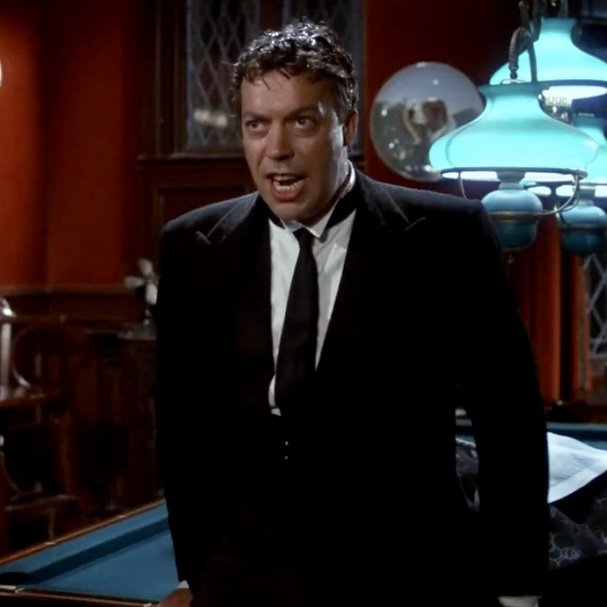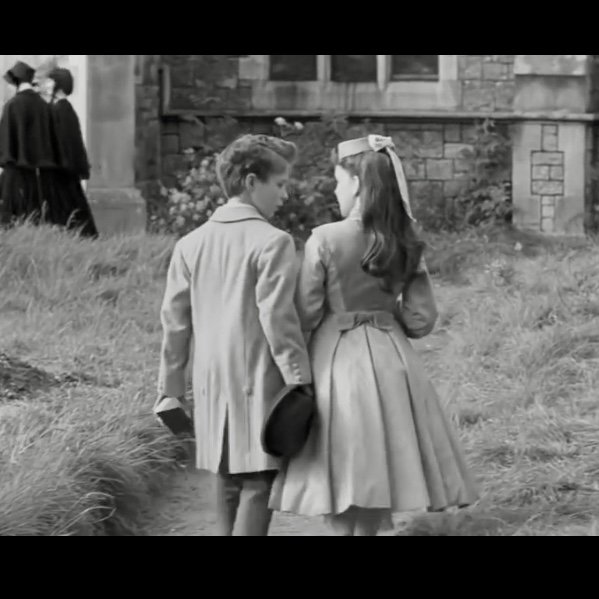Life After Death: The Cult Classic That is Clue
It boggles the mind to think that the 1985 comedic murder mystery, Clue flatlined upon its initial theatrical release. Opening on December 13, 1985, the film, co-conceived by John Landis, and based on the classic Parker Brothers’ board game, was up against The Jewel of the Nile, the sequel to the successful adventure-comedy, Romancing the Stone, with Rocky IV and Landis’ Spies Like Us also continuing to do well commercially. One thing I don’t understand (one thing?): Why Clue didn’t get an October or Halloween-season release-date, considering its murder-mystery genre.
However, with the help of cable television, and the birth of the VHS rental market, Clue was brought back to life by viewers, in their living rooms, with the remote control. From John Morris’ Hitchcockian, Bernard Herrmann-inspired orchestral score during its opening credits, to the solid cast of “colorful” characters that the viewer meets one by one as each arrives at a spooky manor on a dark and stormy night, Clue is “cozy murder” at its best.
The screenplay’s mid-1950’s timeframe allowed the director and screenwriter, Jonathan Lynn, to weave in satirical jabs at McCarthyism, conservative moral codes, even good ol’ fashioned capitalism. But mostly, Clue works because of the sharp lines of dialogue, quickly delivered between characters. Tim Curry’s Wadsworth, the Butler, not only tidies up the kitchen and the dining room, but takes it upon himself (as a workingman’s Hercule Poirot) to neatly wrap up the mystery via a zany, fast-paced, cartoon-caliber reenactment of the evening’s events, where the viewer discovers the whodunit and two other who(could’ve)dunits.
Repeated airings and rentals in the ‘80s and ‘90s, and purchases, of Clue have earned the film a large fan base, to the point where it’s easily reached cult-classic status. In particular, Madeline Kahn’s improvised “flames” monologue is a fan favorite, and probably the movie’s most recited section.
Long story short (too late): Clue certainly proves that just because something doesn’t break box-office records doesn’t mean it’s destined for the bargain bin and into obscurity; with a strong ensemble cast, a witty script full of memorable lines, and the support of a deeply loyal following, a film such as Clue can take on a life (after death) of its own.
“Secretive; Whispery; Indecent”: Intentional Disconnect in 1961’s The Innocents
More gothic folklore than gruesome gore, Jack Clayton’s beautifully haunting (and hauntingly beautiful) 1961 film, The Innocents is high-art psychological horror. Co-written by William Archibald and Truman Capote, the film is based on the 1898 Henry James story, The Turn of the Screw.
Deborah Kerr stars as Miss Giddens, a governess hired to care for two children, Flora (Pamela Franklin) and Miles (Martin Stephens), at an English manor. An unsettling tone is set right from the beginning: Behind the initial screen blackness, pre-opening credits, the sound of a young girl (Flora) singing “O Willow Waly” creates a disturbing blurred line between wholesome lullaby and its mournful lament for a lost lover. The disconnect continues through the opening credits, now with birds chirping in the darkness; those familiar tweets most often heard at daybreak, instead of in the dead of night. And finally, a profile of a distressed Miss Giddens, clutching her hands together, tilting her head back with her eyes closed, her forehead glistening with perspiration; the sight of sweat common in the blazing sunlight, not in the glowing moonlight.
Day or Fright
Throughout the crisp, black-and-white film there are a number of bone-chilling scenes. The manor and its grounds become settings for strange goings-on, ones not solely reserved for the nighttime, when fatigue, shadows and imagination can get the best of someone, but in broad daylight as well, often with others nearby. But what is real, and who is credible? In the film’s first line, a sense of doubt is immediately placed upon the viewer toward Miss Giddens, when the children’s uncle asks her during the interview for the governess position: “Do you have an imagination?” An almost embarrassed Giddens replies with a yes. As the film progresses: To believe or not to believe her, that becomes the subsequent question in the viewer’s mind.
Depth of Fear
The crisp black and white mentioned earlier is the work of the cinematographer, Freddie Francis, who used a deep-focus technique, which allows the foreground, middle ground and background to be equally sharp. One of the best examples is when Flora becomes oddly excited about nature’s brutality. She declares: “Oh look, it’s a lovely spider, and it’s eating a butterfly!” (Spiders aren’t usually described as lovely, creating another example of intentional disconnect.) The large depth of field simultaneously creates distance and claustrophobia for the viewer (a visual disconnect), while also establishing Flora as the spider to Miss Giddens as the butterfly.
Brother and Sinister
In addition to this macabre outlook on nature, mature subtexts run throughout, particularly ones dealing with the misguided affection between Miles and Miss Giddens. After learning more about two of the manor’s previous residents, Giddens begins to suspect the prim, proper, poetic Miles, and the once-sweet now emotionally hysterical, Flora are not who they appear to be, that something evil has entered the innocent (foreshadowed when Giddens admires a stone cherub in the garden, only for a cockroach to crawl out of its mouth).
Giddens conveys to Mrs. Grose, the housekeeper enveloped by extreme denial, that both children “are playing, or being made to play, some monstrous game. I can’t pretend to understand what its purpose is; I only know that it is happening: something secretive, and whispery, and indecent.” (Undoubtedly, Capote-penned prose.)
The relationship between Miles and Flora becomes suspect as well. Flora seems to have a psychic connection to Miles, knowing when Miles will return home from his school, permanently dismissed for bad behavior, even before Miss Giddens or Mrs. Grose. Giddens becomes watchful of the two siblings as they hold hands, walking closely together toward the town church. A concerned Giddens says to Mrs. Grose: “Look at them. What do you think they’re saying?… They’re talking about them; talking horrors.”
And the horrors continue through the film’s dizzying conclusion (or disturbing connection to its beginning, as described earlier), one that is both spine-tingling and heavyhearted, where the secretive becomes communicative, the whispery reaches its crescendo, the indecent once again innocent.












